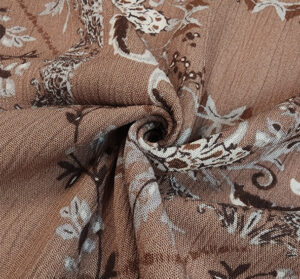What Thread Works with Linen and Polyester? A Comprehensive Guide
In the world of fashion and sewing, fabric compatibility is crucial for creating garments and home decor items that are both aesthetically pleasing and functional. Linen and polyester, although different in nature, can be combined to harness the best of both worlds. This article explores how these fabrics can be paired effectively, offering insights into their properties, benefits, challenges, and sewing tips.
Compatibility Analysis
Yes, linen and polyester can be combined successfully in various projects. The compatibility of these fabrics lies in their complementary properties. Linen, a natural fiber, offers breathability and a classic texture, while polyester, a synthetic fiber, adds durability and wrinkle resistance. When mixed, they balance each other’s weaknesses and strengths, creating versatile and resilient textiles.
Key factors to consider include:
- Texture: Linen’s coarse texture contrasts with polyester’s smoothness, creating a unique tactile experience.
- Weight: Both fabrics can vary in weight, so selecting compatible weights is essential for balance.
- Stretch: Polyester’s elasticity can offset linen’s rigidity, improving comfort.
- Care Requirements: Polyester is low-maintenance, whereas linen requires careful handling.
- Durability: Polyester enhances the longevity of linen, making the blend suitable for high-use items.
Fabric Properties Comparison Table
| Property | Linen | Polyester |
|---|---|---|
| Fiber Content | Natural | Synthetic |
| Weight and Thickness | Medium to heavy | Light to heavy |
| Breathability | High | Low |
| Moisture-wicking | Good | Moderate |
| Stretch and Elasticity | Low | High |
| Wrinkle Resistance | Low | High |
| Care Instructions | Hand-wash or gentle | Machine-washable |
| Durability | Moderate | High |
Benefits of Mixing These Fabrics
Combining linen and polyester offers numerous advantages:
- Enhanced Texture and Visual Interest: The contrast between linen’s natural texture and polyester’s smoothness creates visually appealing garments and decor.
- Improved Comfort and Performance: The blend provides breathability with added stretch and durability.
- Better Drape and Movement: Polyester’s flexibility enhances linen’s drape, making it suitable for flowing garments.
- Cost-effectiveness: Polyester is generally less expensive, reducing overall material costs.
- Seasonal Versatility: The blend can be adapted for both warm and cool climates.
- Design Possibilities: Mixing these fabrics opens up creative opportunities for unique designs.
Potential Challenges
While beneficial, mixing linen and polyester presents some challenges:
- Different Shrinkage Rates: Pre-washing fabrics can minimize shrinkage issues.
- Conflicting Care Requirements: Choose care methods that suit both fabrics.
- Texture Clash or Pilling: Use fabric softeners or gentle washing to prevent pilling.
- Seam Puckering: Use appropriate thread tension and needles.
- Color Bleeding or Fading: Wash with color-safe detergents and in cold water.
Sewing & Styling Tips
To achieve the best results when sewing with linen and polyester:
- Needle and Thread Recommendations: Use a universal needle size 80/12 with polyester thread for strength.
- Interfacing and Stabilizer Needs: Lightweight interfacing can add structure without bulk.
- Seam Finishing Methods: French seams or serging prevent fraying.
- Pattern Selection Advice: Choose patterns that highlight the drape and texture of the blend.
- Styling Ideas: Pair linen-polyester garments with natural accessories for a balanced look.
Care & Maintenance Guide
Proper care ensures the longevity of linen-polyester blends:
- Washing Instructions: Use cold water and a gentle cycle.
- Drying Recommendations: Air dry or tumble dry on low heat to prevent shrinkage.
- Ironing and Steaming Tips: Use a medium iron setting with steam for linen areas.
- Stain Removal: Spot clean with mild detergent for persistent stains.
- Long-term Care: Store in a cool, dry place to prevent mold and mildew.
FAQ Section
- Can you wash linen and polyester together? Yes, but use cold water and a gentle cycle.
- Will linen shrink more than polyester? Linen is more prone to shrinkage, so pre-wash is recommended.
- What needle size should I use for sewing these fabrics together? A universal needle size 80/12 is ideal.
- Can you mix linen and polyester in one garment? Absolutely, they complement each other well.
- How do you prevent seam puckering? Adjust thread tension and use the correct needle.
- Is it okay to mix linen and polyester for upholstery? Yes, but consider durability needs and care requirements.
- What’s the best way to finish seams with these fabrics? French seams or serging work well to prevent fraying.
By understanding the properties and compatibilities of linen and polyester, you can create beautiful, durable, and functional textiles that suit a variety of applications, from fashion to home decor.

Leave a Reply